Penetration testing, often abbreviated as pen testing, is a critical cybersecurity practice that involves assessing the security of computer systems, networks, or applications to identify vulnerabilities and weaknesses before malicious hackers can exploit them. It simulates real-world cyberattacks to uncover potential security risks and provides organizations with valuable insights into their security posture. In this article, we will explore the various types of penetration testing and their significance in safeguarding digital assets.
What is Penetration Testing?
Penetration testing is a proactive approach to cybersecurity that involves a controlled assessment of an organization’s security measures. Skilled ethical hackers, also known as penetration testers, attempt to exploit vulnerabilities in the system to identify weak points and provide recommendations for mitigation. This process helps organizations bolster their defenses, reduce the risk of data breaches, and maintain the confidentiality, integrity, and availability of their critical assets.
The Importance of Penetration Testing
Penetration testing plays a pivotal role in modern cybersecurity for several reasons. It:
- Identifies vulnerabilities: By simulating real-world attacks, pen testing reveals weaknesses that may otherwise remain hidden.
- Mitigates risks: Organizations can address and rectify vulnerabilities proactively, reducing the chances of a successful cyberattack.
- Ensures compliance: Many regulatory frameworks and standards, such as PCI DSS and HIPAA, mandate regular penetration testing.
- Builds trust: Demonstrating a commitment to cybersecurity reassures customers and stakeholders about the safety of sensitive information.
Different Types of Penetration Testing
Penetration testing encompasses various specialized fields, each focusing on a specific aspect of cybersecurity. Let’s explore the different types:
Network Penetration Testing
Network penetration testing, often referred to as network pen testing, is a critical aspect of cybersecurity. It involves a thorough assessment of an organization’s network infrastructure to identify vulnerabilities, weaknesses, and potential security gaps. Skilled ethical hackers simulate real-world attacks to test the network’s defenses against unauthorized access and data breaches. This form of pen testing often includes evaluating routers, switches, firewalls, and other network components to ensure they are configured securely.
The primary objectives of network penetration testing are to pinpoint and address vulnerabilities that could be exploited by cybercriminals and to strengthen the overall security posture of the organization. By uncovering these weaknesses, organizations can proactively mitigate risks, prevent data breaches, and ensure the confidentiality, integrity, and availability of sensitive information.
Web Application Penetration Testing
Web application penetration testing, also known as web app pen testing, is vital in the modern digital landscape. It focuses on assessing the security of web-based applications, including websites and web services. Skilled testers work to identify vulnerabilities such as SQL injection, cross-site scripting (XSS), and authentication flaws that can compromise user data and lead to unauthorized access.
The significance of web app pen testing lies in its ability to ensure the safety of critical user information and maintain the integrity of web applications. By conducting these tests, organizations can identify and fix vulnerabilities before they are exploited by malicious actors, enhancing the trust of their customers and partners.
Mobile Application Penetration Testing
With the rapid proliferation of mobile apps, mobile application penetration testing has become a necessity. This specialized form of pen testing involves assessing the security of mobile applications across different platforms. Testers focus on identifying vulnerabilities unique to mobile apps, such as insecure data storage, insufficient encryption, and improper session management.
Mobile app pen testing is crucial to protect user data and ensure that mobile applications are not vulnerable to hacking or data theft. It provides organizations with the confidence that their apps are secure, thus preserving their reputation and minimizing the risk of security incidents.
Cloud Penetration Testing
Cloud penetration testing is of utmost importance in an era where many organizations rely on cloud platforms for data storage and application hosting. This form of pen testing evaluates the security of cloud infrastructure and services, including configurations, permissions, and data storage practices.
By conducting thorough cloud pen testing, organizations can identify potential risks and vulnerabilities in their cloud environments, ensuring the security of their data and applications. This proactive approach is essential to maintain the trust of users and comply with industry regulations.
Each of these specialized forms of penetration testing serves a unique purpose in identifying and addressing vulnerabilities specific to their domains. By conducting a comprehensive range of pen tests, organizations can bolster their cybersecurity defenses and protect their assets from an ever-evolving landscape of cyber threats.
In conclusion, penetration testing is an invaluable tool in the fight against cyber threats. By identifying and addressing vulnerabilities in various domains, organizations can enhance their security posture and protect sensitive data from the ever-evolving landscape of cyber threats. Whether it’s network, web application, mobile, cloud, wireless, social engineering, physical, or IoT penetration testing, each type contributes to a robust and proactive cybersecurity strategy.
Certainly, let’s expand the content for each of the specified headings using the exact keyword “pen testing.”
The Penetration Testing Process
Penetration testing, often referred to as “pen testing,” is a structured and systematic process that aims to evaluate the security posture of an organization’s digital assets. This process typically consists of several essential phases.
- Reconnaissance: In this initial phase, pen testers gather information about the target system, including its architecture, potential vulnerabilities, and entry points. This phase is crucial for setting the direction of the penetration test.
- Scanning: During the scanning phase, testers actively probe the target system using various tools and techniques. They scan for vulnerabilities in network configurations, application code, and system settings. The goal is to identify potential weaknesses that could be exploited by malicious actors.
- Gaining Access: Once vulnerabilities are identified, penetration testers attempt to exploit them, gaining unauthorized access to the system. This phase mimics the actions of real-world attackers, and its success provides insights into the system’s actual security.
- Maintaining Access: In some cases, maintaining access is crucial for assessing the persistence of an attack. Pen testers aim to retain control over the compromised system to understand the extent of potential damage.
- Reporting: The final phase involves documenting the findings and providing a comprehensive report to the organization. This report outlines identified vulnerabilities, their potential impact, and recommendations for remediation.
The penetration testing process is a vital component of proactive cybersecurity. It helps organizations identify and address vulnerabilities before malicious actors can exploit them, thereby enhancing their overall security posture.
Qualysec: The Best Pen Testing Service Provider
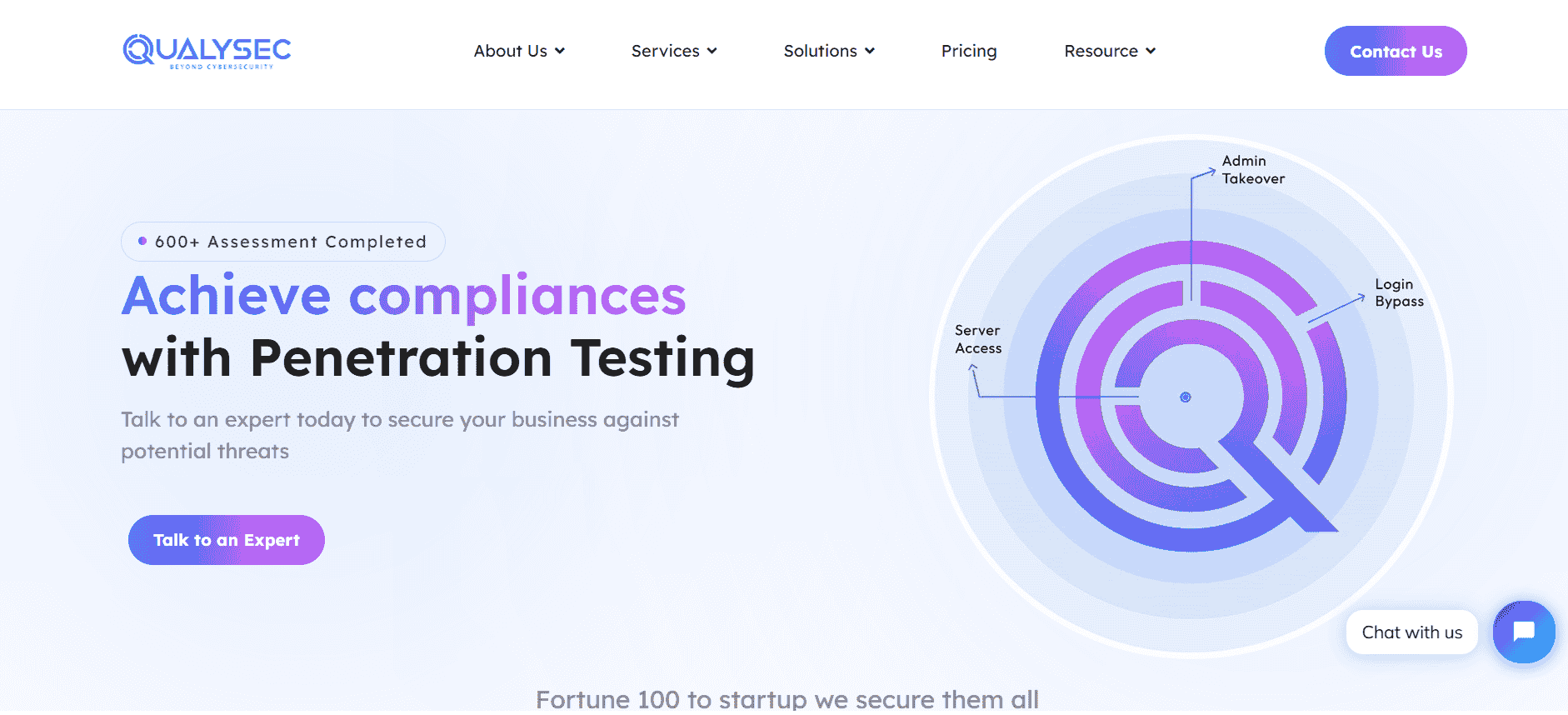
Qualysec is a cybersecurity company founded in 2020 that has quickly become one of the most trusted names in the industry. The company provides services such as VAPT Testing, security consulting, and incident response.
Although Qualysec’s Oppressional office is in India, Qualysec’s extensive knowledge and expertise in cybersecurity testing services have earned a reputation among the Top Pen testing Service Providers.
Technicians at Qualysec can detect flaws that fraudsters could abuse. After these flaws have been found, Qualysec collaborates with the organization to establish a plan to address them and boost the company’s overall security posture. Among the several services available are:
- Web Application Pen testing
- Mobile Application Pen testing
- API Pen testing
- Cloud Security Pen testing
- IoT Pen testing
- AI ML Pen testing
The Qualysec team, comprising seasoned offensive specialists and security researchers, collaborates to provide their clients with access to the latest security procedures and approaches. They provide VAPT services using both human and automated equipment.
In-house tools, adherence to industry standards, clear and simple findings with reproduction and mitigation procedures, and post-assessment consulting are all features of Qualysec’s offerings.
The solution offered by Qualysec is particularly beneficial for businesses that must adhere to industry rules or prove their dedication to security to clients and partners. So, by doing routine penetration testing, businesses may see weaknesses and fix them before thieves attack them.
As a result, experts rate Qualysec as the provider and it uses top Pentesting Tools for its pen testing process.
Types of Pentesting Tools
Open-source Pentesting Tools
Open-source pen testing tools are instrumental in the cybersecurity community. They are freely available, crafted, and maintained by a global community of developers. This category encompasses a wide range of tools across various domains.
Web Application Penetration Testing Tools
These tools are expressly designed for web applications. They operate online, executing tests on web applications by accessing their URLs. Typically, they incorporate DAST (Dynamic Application Security Testing) techniques, complemented by manual penetration testing.
Network Penetration Testing Tools
Network penetration testing involves simulating hacker-style intrusions to unearth network vulnerabilities. Specialized tools, such as NMap, facilitate network mapping and vulnerability detection in this context.
Mobile Application Penetration Testing Tools
Distinct from web app testing, mobile application penetration tests necessitate more human intervention. There are no one-size-fits-all tools for mobile apps; expert pen testers are essential to effectively assess mobile app security.
Cloud Penetration Testing Tools
Cloud pen-testing predominantly involves cloud configuration reviews, examining security in accordance with cloud service provider agreements. Experts identify misconfigurations, assess virtual machines, and ensure workload isolation.
Automated Penetration Testing Tools
Automation is key to efficiently integrating vulnerability scanning into your Software Development Life Cycle (SDLC). These tools allow scheduled scans and real-time testing when new code is updated.
Manual Penetration Testing Tools
Some vulnerabilities elude automated scanners. Manual penetration tests mimic real hacker intrusions, uncovering critical vulnerabilities, including business logic errors and payment gateway vulnerabilities. This requires the expertise of pen-testers.
Penetration Testing as a Service
Penetration Testing as a Service (PTaaS) is a comprehensive service offered by companies. They remotely access your system, conduct tests, and provide you with detailed results
Tools Used in Penetration Testing
Penetration testers rely on a diverse array of specialized penetration testing tools to conduct thorough assessments. These tools are crucial for automating various aspects of the testing process, enabling testers to identify vulnerabilities and weaknesses efficiently.
- Reconnaissance Tools: Tools like Shodan and Maltego assist in information gathering and footprinting, helping testers understand the target system’s environment.
- Scanning Tools: Scanning tools like Nmap and Nessus are essential for identifying open ports, services, and potential vulnerabilities in the target system.
- Exploitation Tools: Exploitation tools like Metasploit provide the means to simulate attacks and attempt to gain unauthorized access by exploiting vulnerabilities.
- Reporting Tools: Reporting tools such as Dradis and Faraday help testers create detailed reports for organizations, including identified vulnerabilities and recommended actions for remediation.
The selection of the right combination of tools is crucial for the success of a penetration test. These tools help testers uncover vulnerabilities, evaluate security measures, and provide organizations with the insights needed to enhance their security.
Benefits of Penetration Testing
Penetration testing offers a wide range of benefits to organizations seeking to secure their digital assets and data:
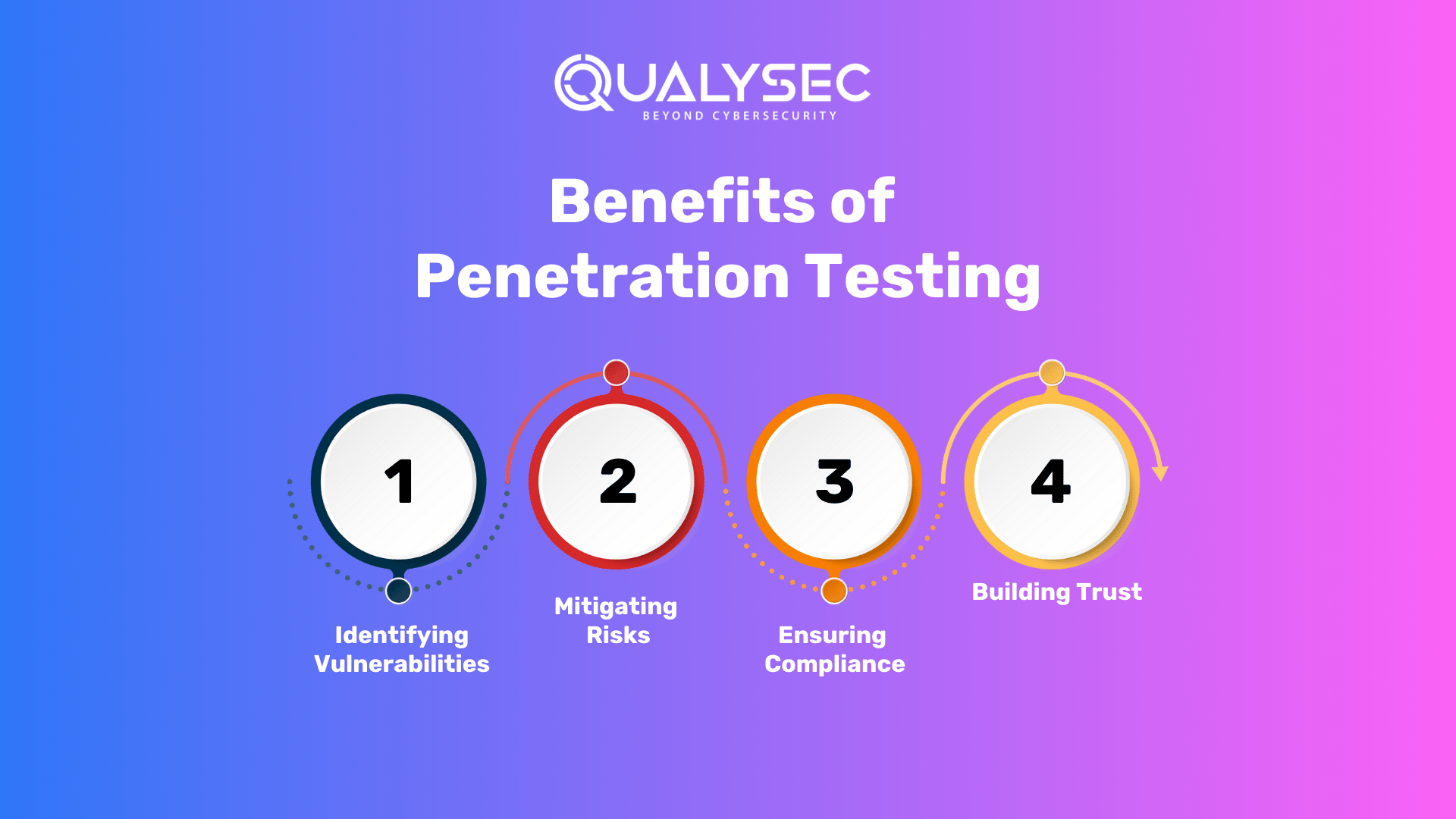
- Identifying Vulnerabilities: By simulating real-world attacks, pen testing helps organizations identify vulnerabilities that may otherwise remain hidden. This proactive approach allows for timely remediation.
- Mitigating Risks: Organizations can address and rectify vulnerabilities proactively, reducing the chances of a successful cyberattack. This reduces the potential financial and reputational damage that can result from security incidents.
- Ensuring Compliance: Many regulatory frameworks and industry standards require regular penetration testing to demonstrate a commitment to cybersecurity. Compliance helps organizations avoid fines and penalties.
- Building Trust: Demonstrating a commitment to cybersecurity through penetration testing builds trust with customers and stakeholders. It reassures them that sensitive information is safeguarded and fosters confidence in the organization.
Challenges in Penetration Testing
While penetration testing offers numerous advantages, it comes with its own set of challenges:
- Balancing Realism and Disruption: Testers must strike a balance between simulating real-world attacks and avoiding disruptions to the organization’s operations. Some aggressive tests can impact services, leading to downtime or performance issues.
- Resource Intensiveness: Penetration testing can be time-consuming and resource-intensive, requiring skilled professionals, access to a variety of tools, and often significant testing environments.
- Evolving Threat Landscape: Keeping up with evolving threats and vulnerabilities is an ongoing challenge. Cyber threats continually evolve, making it essential for penetration testers to stay up to date and adapt their methodologies.
- Legal and Ethical Considerations: Ethical and legal considerations are paramount. Testers must operate within the boundaries of the law and ethical guidelines while conducting their tests.
In conclusion, despite the challenges, the proactive approach of penetration testing remains a vital defense against the ever-evolving landscape of cyber threats. It offers a structured and systematic method for organizations to enhance their security measures, identify vulnerabilities, and ultimately protect their digital assets and sensitive information.
Conclusion
In conclusion, penetration testing is an essential component of any robust cybersecurity strategy. It systematically assesses an organization’s security measures, identifies vulnerabilities, and provides actionable recommendations for remediation. By employing a well-defined penetration testing process and utilizing the right tools, organizations can reap the benefits of enhanced security, regulatory compliance, and the trust of their stakeholders. While challenges exist, the proactive approach of penetration testing remains a vital defense against the ever-evolving landscape of cyber threats.
Opting for Qualysec to fulfill your penetration testing requirements signifies a substantial stride towards establishing a fortified environment for your business and, equally importantly, for your clientele. It’s time to advance further. Engage in a conversation with a seasoned security expert. Gain insight into the cyber security aspects your organization may be lacking and initiate the essential steps to bolster your defenses.
Qualysec has a successful track record of serving clients and providing cybersecurity services across a range of industries such as IT. Their expertise has helped clients identify and mitigate vulnerabilities, prevent data breaches, and improve their overall security posture.
When it comes to comprehensive cybersecurity audits, Qualysec is the organization to go with. Their cost of VAPT guide helps clients make informed decisions by understanding the various factors that affect the cost by clicking here.
FAQs
What is the primary goal of penetration testing?
The primary goal of pen testing is to proactively identify vulnerabilities and weaknesses in an organization’s systems, networks, and applications. By simulating real-world cyberattacks, it helps assess the security posture and ensures that these vulnerabilities are addressed to prevent potential exploitation by malicious actors.
Is penetration testing legal?
Yes, penetration testing is legal when conducted with proper authorization and consent. Organizations should ensure that they have explicit permission to test their systems and networks. Unauthorized penetration testing is illegal and can lead to legal consequences.
How often should penetration testing be conducted?
The frequency of penetration testing can vary depending on factors such as an organization’s industry, regulatory requirements, and the rate of system changes. Generally, it’s recommended to perform penetration testing annually or after significant changes to the IT environment. However, critical systems or those in high-risk industries may require more frequent testing.
Can penetration testing be automated?
Yes, certain aspects of pen testing can be automated. Tools like vulnerability scanners and exploitation frameworks automate specific tasks. However, human expertise is essential for interpreting results, adapting to unique situations, and conducting in-depth assessments that automated tools may miss.
What are some famous examples of successful penetration testing?
While specific details of successful pen testing are often confidential, there have been publicly disclosed examples:
- In 2010, a group of white-hat hackers successfully penetrated a power plant’s control systems in the U.S., highlighting the vulnerabilities in critical infrastructure.
- The “Hack the Pentagon” initiative in 2016 allowed ethical hackers to find vulnerabilities in the U.S. Department of Defense systems.
- Bug bounty programs run by tech companies like Google, Facebook, and Apple have seen numerous successful penetration tests where ethical hackers find and report vulnerabilities in their products and services.












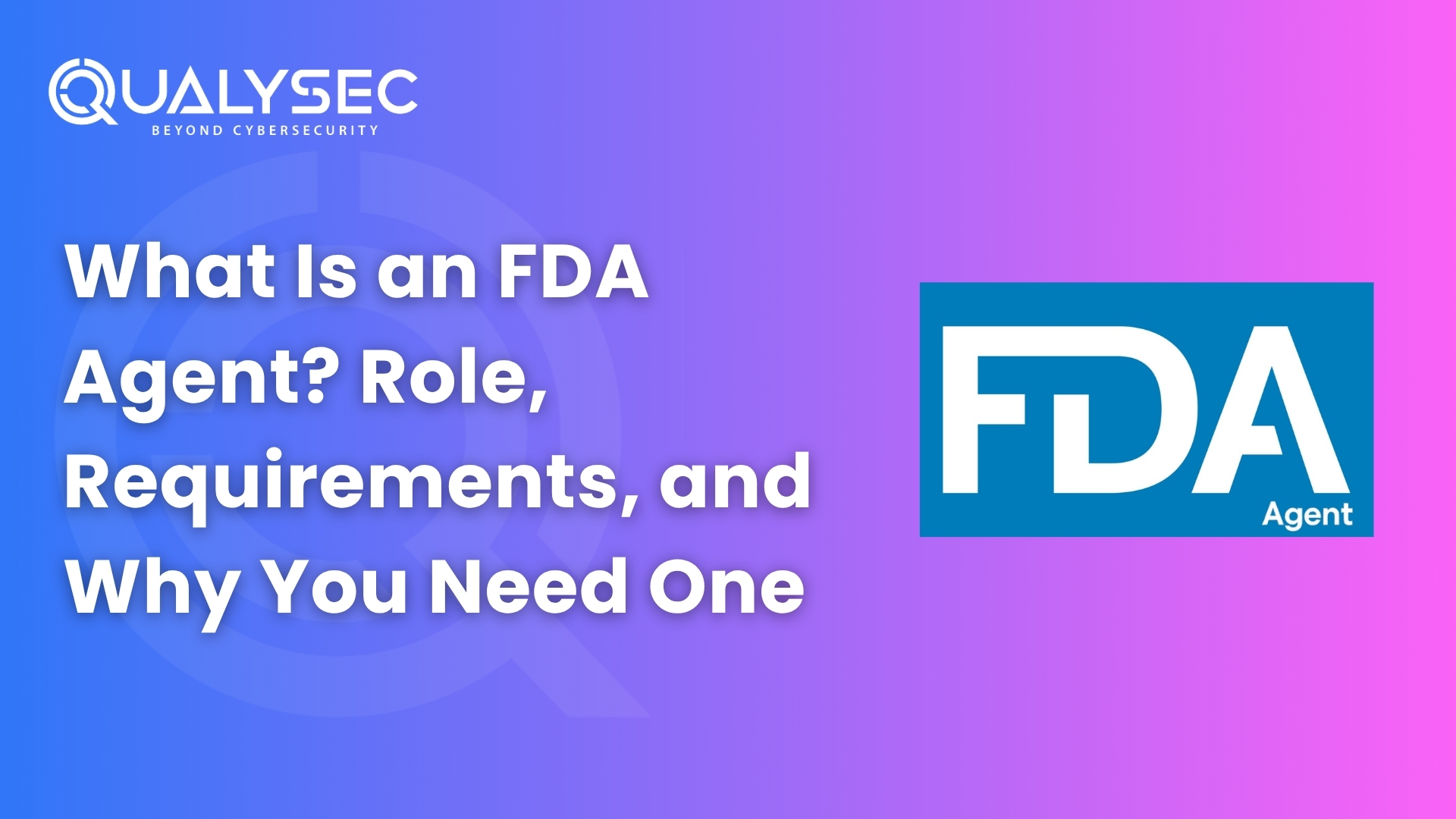
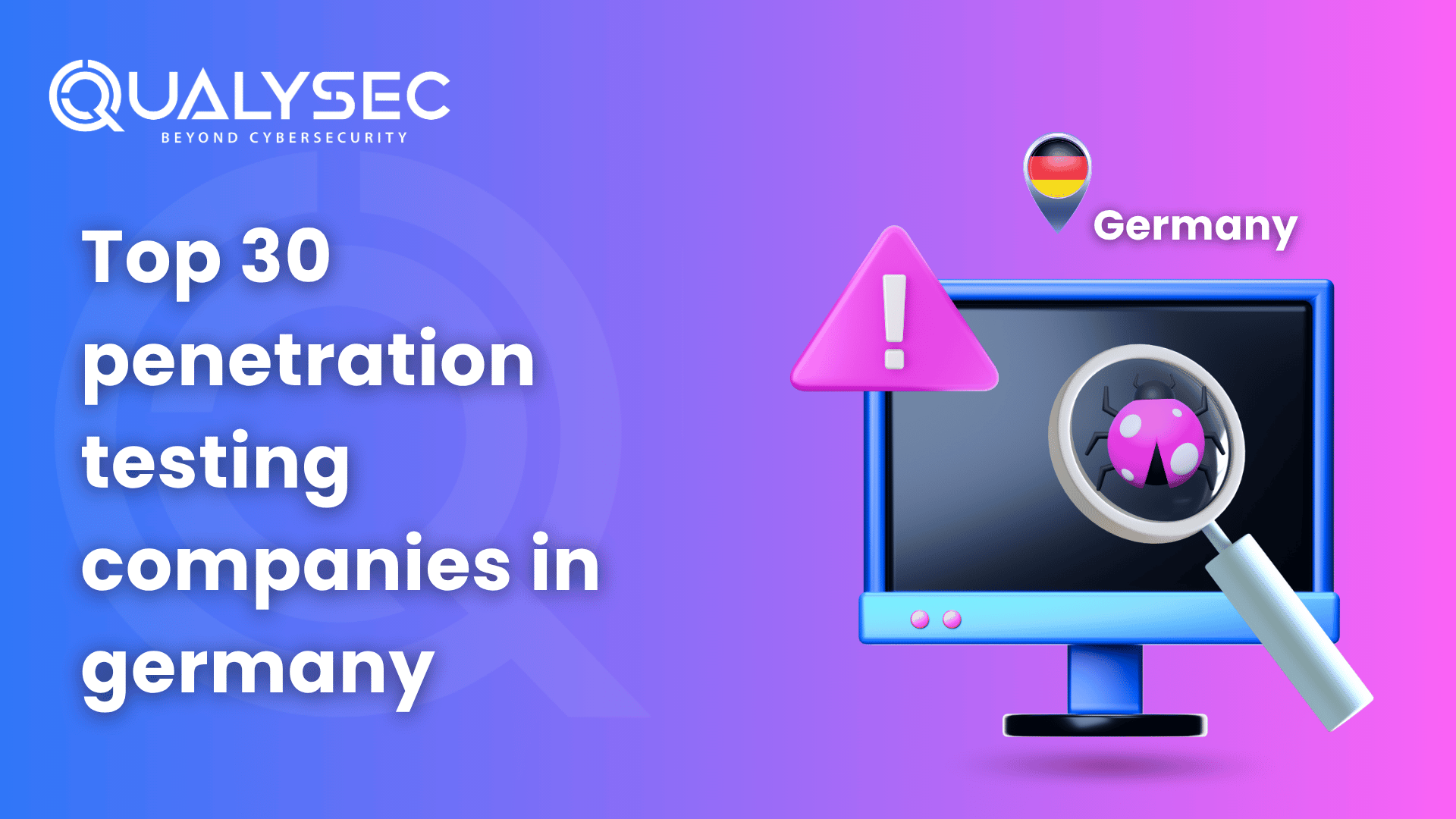







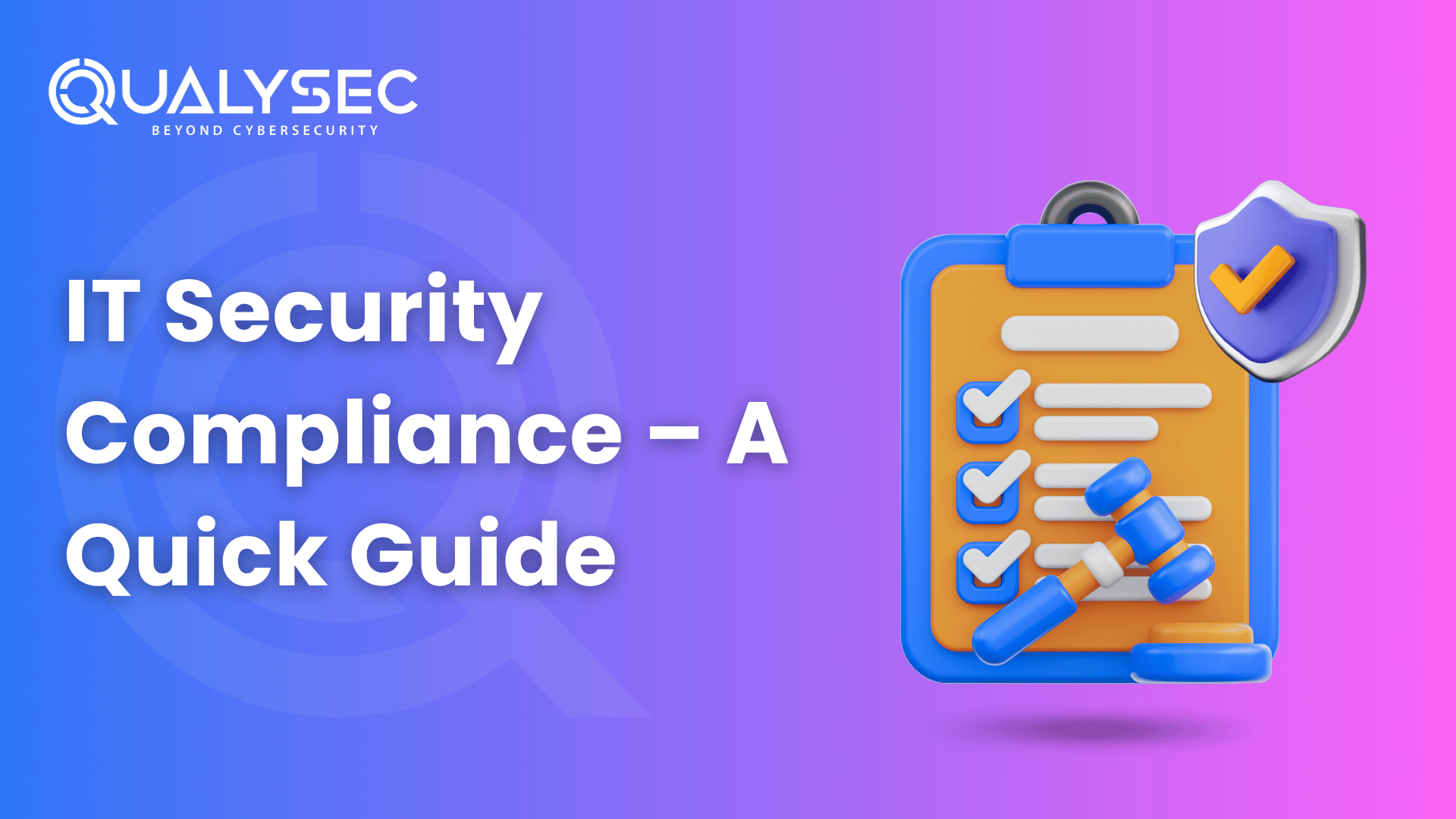















































































































































































































































































































































































































































































































0 Comments